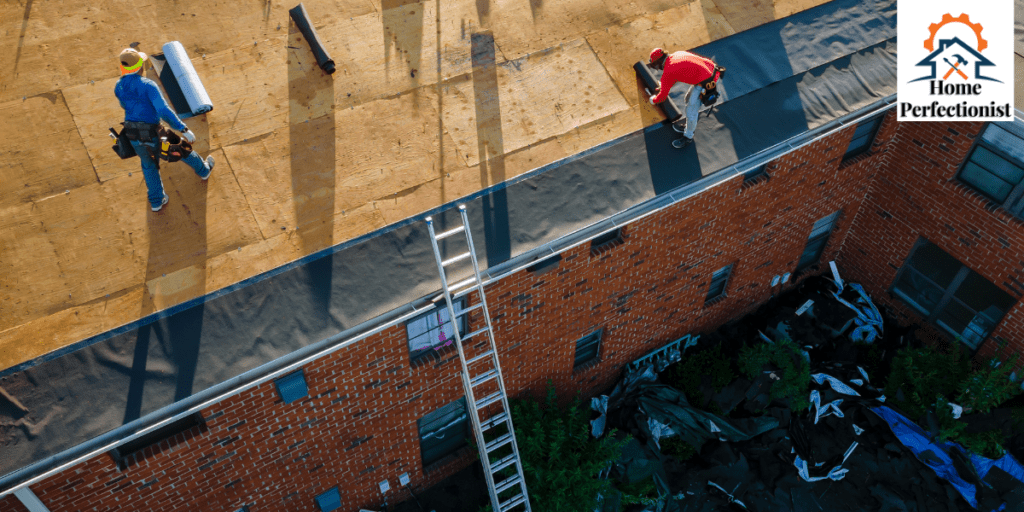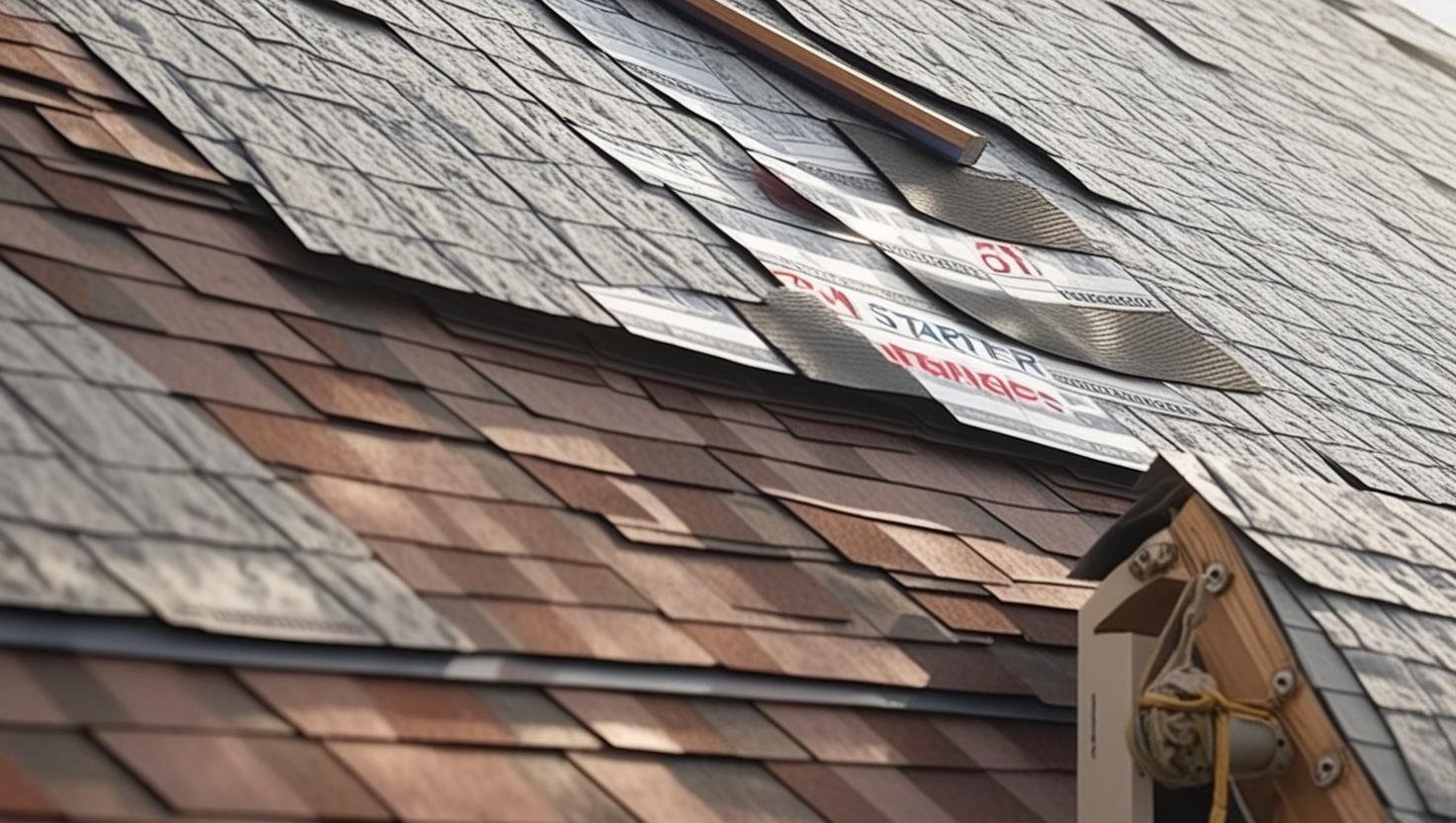Can You Install a Metal Roof Over Shingles? A Comprehensive Guide
Table of Contents
ToggleIntroduction
Installing a metal roof over existing shingles is a popular option for homeowners looking to upgrade their roofing system without the hassle and expense of a complete roof replacement. This method can save time, money, and effort by avoiding the labor-intensive process of tearing off old shingles. However, it’s not a one-size-fits-all solution. While it works well for roofs in decent condition, severe issues like water damage, mold, or structural instability may require a complete replacement.
This guide will explore the ins and outs of installing a metal roof over shingles, including the benefits, challenges, and step-by-step installation process. Whether you’re a homeowner considering this option or a contractor looking for insights, this article will provide valuable information to help you make an informed decision.
What is a Metal Roof-Over?
A metal roof-over involves installing new metal panels—typically made of lightweight aluminum or steel—directly on top of existing asphalt shingles. This method is gaining popularity due to its efficiency, cost-effectiveness, and minimal disruption compared to traditional roof replacements.
Key Features of Metal Roof-Overs:
- Durability: Metal roofs are known for their long lifespan, often lasting 40 to 70 years.
- Energy Efficiency: The added metal layer reflects sunlight, reducing heat absorption and energy costs.
- Eco-Friendliness: By avoiding removing and disposing of old shingles, metal roof-overs generate less waste.
- Weather Resistance: Metal roofs protect against harsh weather conditions, including wind, hail, and heavy rain.
Understanding Metal Roof-Over Installation
1. Initial Assessment and Preparation
Before proceeding with a metal roof-over, a thorough inspection of the existing roof is essential. Look for:
- Cracked, damaged, or missing shingles.
- Signs of water damage, mold, or rot.
- Structural integrity to ensure the roof can support the added weight of metal panels.
If the existing roof is in poor condition, partial or complete removal of shingles may be necessary. Consulting a professional roofer is highly recommended to assess the roof’s suitability for a metal roof-over.
2. Installation Process
The installation of a metal roof-over involves several key steps:
- Repair and Clean: Address damaged areas and clean the roof surface to ensure a stable base.
- Install Underlayment: Apply a waterproof underlayment to prevent moisture buildup and protect against leaks.
- Add Furring Strips: Install furring strips (raised wooden frames) to create a ventilation gap between the shingles and metal panels.
- Secure Metal Panels: Lay the metal panels over the shingles and secure them with screws and fasteners.
- Install Flashing: Add flashing around chimneys, vents, and edges to direct water away from vulnerable areas.
- Seal and Finish: Apply sealants at joints and edges to ensure a watertight finish.
3. Compliance and Considerations
Always check local building codes and regulations before starting the project. Some areas restrict the number of roof layers allowed or specific requirements for metal roofing installations. Working with experienced contractors ensures compliance and a high-quality installation.

Exploring the Variety of Metal Roofing Options
1. Standing Seam Roofs
- Features: Vertical metal panels that interlock for a sleek, modern look.
- Benefits: Excellent weather resistance, concealed fasteners, and durability.
- Best For: Residential and commercial properties in coastal or suburban areas.
2. Exposed Fastener Roofs
- Features: Metal panels secured with visible screws.
- Benefits: Cost-effective and easy to install.
- Best For: Barns, sheds, carports, and other uninhabited structures.
Quick Tips for Metal Roof-Over Installation
- Assess the Existing Roof: Ensure the roof is in good condition before installation.
- Consult Local Codes: Verify compliance with building regulations.
- Choose Experienced Contractors: Hire professionals with expertise in metal roofing.
- Ensure Adequate Support: Confirm the roof structure can handle the added weight.
- Manage Moisture: Install proper ventilation to prevent condensation and mold.
Challenges of Installing a Metal Roof Over Shingles
While metal roof-overs offer many benefits, they come with potential challenges:
- Uneven Surface: Existing shingles can create an uneven base, affecting the stability of metal panels.
- Moisture Issues: Poor ventilation can lead to condensation, mold, and wood rot.
- Weight Concerns: The combined weight of shingles and metal panels may strain the roof structure.
- Code Compliance: Failing to meet local building codes can result in legal and warranty issues.
- Hidden Costs: Underlying problems like deteriorated shingles may require additional repairs.
How to Ensure a Successful Metal Roof-Over Project
A successful metal roof-over project requires careful planning, proper execution, and attention to detail. Here are some actionable steps to ensure your project goes smoothly and delivers long-lasting results:
1. Hire a Reputable Contractor
- Why It Matters: Not all contractors have experience with metal roof-over installations. Hiring a professional with expertise in metal roofing ensures the job is done correctly and complies with local building codes.
- What to Look For: Check for licenses, certifications, and customer reviews. Ask for references and examples of previous work.
2. Conduct a Thorough Roof Inspection
- Why It Matters: Identifying and addressing underlying issues before installation prevents future problems like leaks, mold, or structural damage.
- What to Do: Inspect the existing roof for damaged shingles, water damage, and structural weaknesses. Repair or replace any compromised areas.
3. Choose the Right Metal Roofing Material
- Why It Matters: Different materials offer varying levels of durability, energy efficiency, and aesthetic appeal.
- Options:
- Standing Seam: Ideal for a sleek, modern look and superior weather resistance.
- Exposed Fastener: A budget-friendly option for simpler structures like sheds or barns.
4. Ensure Proper Ventilation
- Why It Matters: Poor ventilation can lead to moisture buildup, mold, and reduced energy efficiency.
- What to Do: Install attic baffles or air chutes to promote airflow between the old shingles and new metal panels.
5. Follow Local Building Codes
- Why It Matters: Non-compliance with building codes can result in fines, legal issues, or voided warranties.
- What to Do: Research local regulations regarding roof layers, weight limits, and material requirements. Consult your contractor to ensure compliance.
6. Use High-Quality Underlayment and Flashing
- Why It Matters: Underlayment acts as a moisture barrier, while flashing prevents water infiltration around chimneys, vents, and edges.
- What to Do: Invest in durable underlayment and properly install flashing to protect against leaks.
7. Plan for Weight Distribution
- Why It Matters: The combined weight of shingles and metal panels can strain the roof structure if not adequately supported.
- What to Do: Verify that the existing roof can handle the added weight. Reinforce the structure if necessary.
8. Schedule Regular Maintenance
- Why It Matters: Even the most durable roofs require occasional maintenance to ensure longevity.
- What to Do: Inspect the roof annually for loose screws, damaged panels, or signs of wear. Address issues promptly to prevent costly repairs.
Following these steps, you can ensure a successful metal roof-over project that enhances your home’s durability, energy efficiency, and curb appeal.

Benefits of a Metal Roof-Over
- Cost Savings: Avoids the expense of shingle removal and disposal.
- Time Efficiency: Installation is faster than a complete roof replacement.
- Durability: Metal roofs last significantly longer than asphalt shingles.
- Energy Efficiency: Reflects sunlight, reducing cooling costs.
- Eco-Friendliness: Minimizes waste and environmental impact.
- Curb Appeal: Enhances the home’s appearance with various styles and colors.
Final Thoughts
Installing a metal roof over shingles is a practical and cost-effective solution for homeowners seeking to upgrade their roofing system. While it offers numerous benefits, such as durability, energy efficiency, and reduced waste, it is essential to address potential challenges like uneven surfaces, moisture buildup, and structural weight.
By conducting a thorough assessment, ensuring compliance with local codes, and working with experienced professionals, homeowners can achieve a long-lasting, weather-resistant roof that adds value to their property. A metal roof-over is not just a practical choice—it’s a wise investment in the future of your home.
Install a metal roof over shingles (FAQs)
1. Can you install a metal roof over two layers of shingles?
In many cases, local building codes allow a metal roof to be installed over a single layer of shingles but not two layers due to weight and structural concerns. Always check with your local building department before proceeding.
2. Will installing a metal roof over shingles cause moisture problems?
If not properly ventilated, trapped moisture between the shingles and metal panels can lead to mold and rot. To prevent this, install furring strips or a breathable underlayment for proper airflow.
3. Is a metal roof noisier than shingles during rain or hail?
Metal roofs can be noisier, but installing an underlayment or insulation beneath the panels helps reduce noise levels, making it comparable to traditional shingle roofs.
4. How long does a metal roof last compared to shingles?
A metal roof typically lasts 40–70 years, significantly longer than asphalt shingles, which last 15–30 years. Proper installation and maintenance can extend its lifespan even further.
5. Does a metal roof increase home value?
Yes! Metal roofing improves energy efficiency, durability, and curb appeal, making homes more attractive to buyers. It can also increase resale value by up to 6% compared to homes with asphalt shingles.



